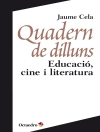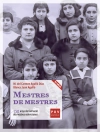‘I can′t wait to share it with my faculty to allow every teacher to better accommodate our diverse learners.’
-Verena Shanin, ESOL Teacher
Berea Middle School, Greenville, SC
‘These strategies will provide teachers with the tools that will ensure that they comply with the No Child Left Behind Act.’
-Steve Hutton, Educational Consultant, Highly Skilled Educator Program
Kentucky Department of Education
‘This book is a wonderful contribution to the field.’
-William Sommers, Teacher
Eden Prairie Public Schools, MN
‘ Sarah Mc Nary says it best when she states that there is no one definition of culture and no single technique that works every time. That sums up the complexity of this issue for educators.’
-Toby Karten, Graduate Instructor
College of New Jersey and Gratz College, PA
Improve teaching and learning in diverse classrooms with these research-based strategies!
Bridging the gap between theory and practice, this one-of-a-kind resource focuses on cultural awareness and culturally responsive teaching of students who are economically disadvantaged, sexual minorities, English language learners, and those with special needs. Grounded in the best peer-reviewed research, each classroom strategy contains:
- A clear, concise description of the recommended strategy
- A synthesis of the research base
- Guidelines for application within the classroom
- Precautions and pitfalls to avoid during implementation
- Source citations for further research and follow-up
Use this innovative resource to create a culturally and linguistically rich classroom environment in which all learners feel safe, challenged, and ready for academic success!
Table des matières
Foreword by Donna Heath
Preface
Acknowledgments
About the Authors
Introduction
1. Making the Multicultural Connection
Strategy 1: Be sensitive to the diversity of today’s classrooms.
Strategy 2: Move beyond “color blind” teaching and take the time to know students in specific localized cultural contexts.
Strategy 3: Reflect on how multicultural competence is defined today.
Strategy 4: Help immigrant students by understanding their personal beliefs.
Strategy 5: White Ethnic students need multicultural education too.
Strategy 6: Cultivate multicultural connections.
Strategy 7: Develop and promote a positive ethnic identity to students.
Strategy 8: Watch for factors of exclusion that influence multicultural curriculum choices.
Strategy 9: Focus on the classroom management factors that best reflect culturally responsive teaching.
Strategy 10: Include multicultural works when developing a quality English curriculum.
2. Including Students with Special Education Needs
Strategy 11: Recognize that different cultures view disabilities differently.
Strategy 12: Teach all students about disabilities to facilitate the social acceptance of students with special needs
Strategy 13: Avoid excessive drill and repetition when teaching math.
Strategy 14: Spend more time teaching a few key concepts rather than trying to cover it all.
Strategy 15: Tailor homework to ensure success for students with disabilities.
Strategy 16: Spend the time to develop and use a variety of assessment strategies.
Strategy 17: Offer positive and constructive feedback rather than criticism.
Strategy 18: Communicate student progress early in a course, but avoid using formal grades to do so.
Strategy 19: Ensure students receive appropriate instructional or assessment accommodations.
Strategy 20: Be aware of potential bias when considering the recommendations of the Student Study Team
Strategy 21: Focus on classroom process before course content to increase time on task.
Strategy 22: Consider using Universal Design for Learning Principles when designing lessons.
Strategy 23: Encourage students to set process goals when learning new technology.
Strategy 24: Create scaffolds to help students learn complex skills and procedures
Strategy 25: Focus on instructionally centered communication when working with students with learning disabilities.
Strategy 26: Encourage students with disabilities to develop positive interpretations of their academic performance.
Strategy 27: Use instructional strategies that support the specific needs of students with attention deficit/hyperactivity disorder (ADHD).
3. Cultivating Gender Sensitivity
Strategy 28: Open the dialogue with students regarding gender equity issues.
Strategy 29: Support male and female students differently during school to school transitions as gender can influence their needs.
Strategy 30: Become aware of the traits of gifted females.
Strategy 31: Work to prevent inequities between male and female students’class partcipation.
Strategy 32: Consider how students sometimes treat female teachers differently than male teachers.
Strategy 33: Address gender issues in the classroom to increase student success and confidence.
Strategy 34: Be prepared for subtle gender bias in academic situations.
4. Including Students Who are Sexual Minorities
Strategy 35: Create a classroom environment of safety and respect.
Strategy 36: Access libraries to provide a more inclusive collection for sexual minorities.
Strategy 37: Explore curriculum that includes minority sexual identity and sexuality.
Strategy 38: Weigh the issues of choosing to remain “closeted” vs. “coming out” within educational settings.
Strategy 39: Consider the effect of teachers “coming out.”
Strategy 40: Be aware of the diverse and complex path that gay males undertake in self-defining themselves as gay.
Strategy 41: Work to prevent “low-level violence” in schools.
5. Supporting Students Who are Economically Disadvantaged
Strategy 42: Teach group skills to help low-income students establish a positive and encouraging support network to increase their likelihood of attending and completing higher education.
Strategy 43: Use cooperative test review and study guides to improve student achievement.
Strategy 44: Encourage all students to enroll in rigorous courses and build in the needed supports to facilitate their success.
Strategy 45: Utilize a variety of print materials to inspire student reading and writing.
Strategy 46: Explore the effects of pacing on student learning when working with low-income students.
Strategy 47: Teach self-regulation and attention sustaining skills to help students improve their performance.
Strategy 48: Explore team teaching to address the needs of economically disadvantaged students.
Strategy 49: Mentor economically disadvantaged students to improve their aspirations.
Strategy 50: Make academic success the first priority for economically disadvantaged students.
Strategy 51: Use a variety of assessments to identify gifted students from underrepresented groups, particularly economically disadvantaged students.
Strategy 52: Support equal access of extracurricular activities to promote student connectedness.
Strategy 53: Use popular films featuring urban classrooms as starting points for reflection and critical analysis.
Strategy 54: Be aware of the factors that contribute to the failure of highly competent students.
6. Meeting the Needs of English Language Learners
Strategy 55: Be wary of low expectations for language minority students.
Strategy 56: Reflect on the complex issues surrounding school literature selection for bilingual and bicultural students.
Strategy 57: Carefully consider the use of cooperative groups with second language students.
Strategy 58: Explore the definition of literacy and the complexity of the term when applied to bilingual and bicultural students
Strategy 59: Actively address the diverse needs of English learners.
Strategy 60: Prepare for a cultural and linguistic mismatch between teachers and their students.
Strategy 61: Select spell checker programs that meet the needs of the specific student population.
Strategy 62: Consider portfolios to create an overview of student performance and growth.
7. Working with Parents
Strategy 63: Develop strategies to help parents help their children succeed academically.
Strategy 64: Include parents from marginalized groups by making them feel welcomed.
Strategy 65: Involve minority and culturally diverse parents as resources in the classroom.
Strategy 66: Consider the positive and negative effects that homework has on students and their families.
8. Establishing and Sustaining Your Professional Identity
Strategy 67: Actively seek opportunities to expand personal experiences in multicultural settings.
Strategy 68: Internalize that cultural experience and perspective is different for each individual.
Strategy 69: Recognize the signs and symptoms of “diversity-related burn-out.”
Strategy 70: Successful teachers should become knowledgeable about adolescent culture.
Strategy 71: Do not underestimate the preparation necessary for placement in urban multicultural settings.
Index
A propos de l’auteur
Cathy D. Hicks most recently directed the Beginning Teacher Support and Assessment (BTSA) program for the San Dieguito Union High School District in Southern California. She oversaw an induction program supporting beginning teachers. She served for ten years on the executive board of the California Association of School Health Educators (CASHE) and has been an adjunct faculty member at California State University at San Marcos. She is co-author of five books: What Successful Teachers Do: 91 Research-Based Strategies for New and Veteran Teachers (2003); What Successful Mentors Do: 81 Research- Based Strategies for New Teacher Induction, Training, and Support (2005); What Successful Teachers Do in Inclusive Classrooms: 60 Research-Based Strategies That help Special Learns (2005); and What Successful Teachers Do in Diverse Classrooms: 71 Research-Based Strategies for New and Veteran Teachers (2006); What Successful Teachers Do: 101 Research-Based Strategies for new and Veteran Teachers (2009).She is a frequent presenter on educational topics both at the state and national level. She taught Physical Education and Health at both the middle and high school level for more than 25 years. During that time, she was involved in the California State Mentor Teacher Program and mentored new teachers in her district for more than 17 years. Her energy, enthusiasm, and passion for teaching and supporting new teachers reinforce the career path she chose in elementary school. She believes the most effective teachers are the ones who never settle for “good enough, ” but continue to grow, stretch, reflect, create, collaborate, and take risks throughout their teaching career.












